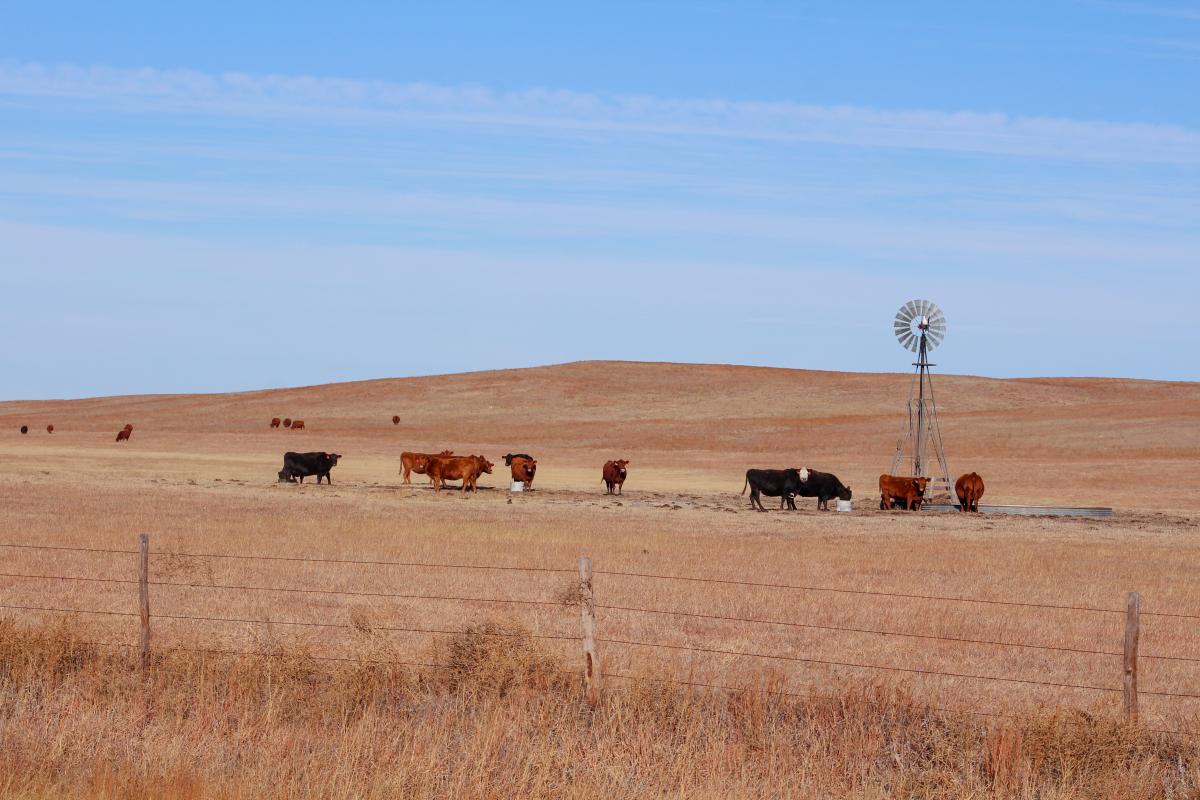
Nebraska Weighs in on Cattle Emission Conversation
Research Focuses on Cattle Greenhouse Gas Emissions
The environmental impacts of cattle emissions have been a contentious conversation in recent years. Some climate conscious consumers are concerned with cattle emission’s potential and impact. Researchers at the University of Nebraska–Lincoln are discovering results that may improve and optimize our management practices and ease those concerns.
Galen Erickson, professor in the Department of Animal Science at the University of Nebraska-Lincoln, and Tala Awada, professor and associate dean in the Agricultural Research Division, conduct transdisciplinary research to better understand cattle’s emissions of greenhouse gases, and the cycle of capturing and storing these gases to fully understand cattle’s role in environmental issues.
“The conversation on cattle and climate has produced some incorrect assumptions,” Erickson said. “However, sound data collected across many years and various environments have produced quite accurate information. At this point, information truly shows the accurate picture of the effect of cattle on the environment and on climate – and cattle actually contribute to a smaller portion of the overall emissions, than originally thought.”
Awada said the research is transdisciplinary and investigates the whole production system of beef with the purpose of creating a sustainable, profitable, and resilient system. The research on greenhouse gas emissions is just one component of this multifaceted research so information provided to the consumer is science based, relevant and sound.
“The goal is to make sure that the consumer's decision is based on sound information, rather than incorrect information,” Erickson said.
Impact of Cattle Biological Systems
Cattle have always naturally produced methane, so it is important for consumers to understand the biological systems that cause cattle to belch methane and the actual environmental impact of doing so.
Due to cattle’s unique four chambered stomach, they naturally produce methane because of the oxygen-lacking environment that bacteria in their stomach live in, Erickson said. Just like humans, after cattle digest feed, they breathe out carbon dioxide (CO2), but cattle also belch methane after eating.
Methane has drawn concern because it is known as a more potent greenhouse gas, Erickson said, because it has a higher ability to trap heat. However, he said in 2019, a group of atmospheric scientists from Oxford found that methane is not as potent as previously believed because it only lasts in the atmosphere for 10 years.
In contrast, CO2 lasts around a thousand years. Another difference between methane and CO2 is the amount found in the atmosphere. CO2, mostly coming from energy and fossil fuel use, makes up for 79% of all greenhouse gases whereas methane only accounts for 11%, according to the EPA.
Optimizing Grazing Systems Leads to Best Results
In Nebraska, a large part of a cattle’s lifespan is spent out on pasture, which will play a major role in carbon sequestration, Erickson said.
“Optimizing grazing systems is the best way to ensure that carbon is being taken up by the pasture, cattle are growing from utilization of the forage, and greenhouse gas emissions are being offset of cattle from birth to slaughter,” Erickson said.
Pasture grazing for 180 days of the year is the best way to ensure cattle do not have a negative impact on the climate, according to Erickson.
For example, while pasture grazing is important, weather conditions in Nebraska do not allow producers to have cattle graze year-round because of the grass’s growth. Erickson said finishing cattle in dry lots allows for a year-round beef supply and a faster rate of gain, further reducing negative impacts.
“When optimized grazing is applied based on the climate and the region, there is more carbon sequestered than what cattle breathe out in CO2 and produce in methane,” Erickson said.
The Research Behind It All
Erickson, Awada, and their team at the University of Nebraska-Lincoln and the United States Department of Agriculture Agricultural Research Service (USDA ARS) compare two different cow-calf systems, measuring carbon sequestration and greenhouse gas emissions of the system.
The research is part of the Long Term Agroecosystem Research (LTAR) USDA funded network, where the team records cattle’s emissions on pasture and dry lots at the Eastern Nebraska Research and Education Center (ENREC).
“For the one year of above average precipitation, the grazing system had a positive impact on the environment,” Awada said. “We continue with our measurements to capture inter- and intra- annual variability in greenhouse gases as impacted by climate and management practices before we can draw conclusions”
Along with Erickson and Awada other team members include Andy Suyker, Andrea Watson, Yijie Xiong and Jim MacDonald along with Virginia Jin and Marty Schmer from the USDA. These researchers continue to not only record cattle’s emissions, but also work to find different inputs (such as diet additives) that could reduce cattle’s methane emissions as well.
Living in a state run on agriculture and cattle specifically, all Nebraskans should be rooting for consumers to have evidence-supported information available when debating on whether to pick up beef products for their next meal.
Key Takeaways:
- Cattle’s potential impact on climate issues has been a continuous conversation in recent years.
- Methane, a greenhouse gas, has always been naturally produced by cattle due to their ruminant digestive system.
- Because of methane’s shorter lifespan of 10 years, it is not accumulating in the atmosphere as long as other greenhouse gases.
- A UNL team is researching emissions and carbon uptake in pastures and dry lots to analyze the impact the entire system has on the environment and have found cattle’s emissions environmental impact varies and may not be as bad as previously thought.
- For more information about cattle’s greenhouse gas emissions and the research Erickson and Awada’s are conducting visit https://extension.unl.edu/statewide/enre/about-enrec-research/.
